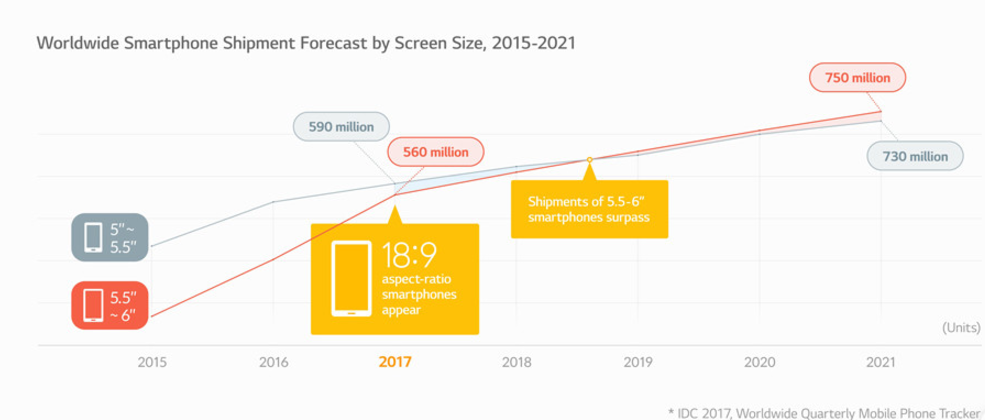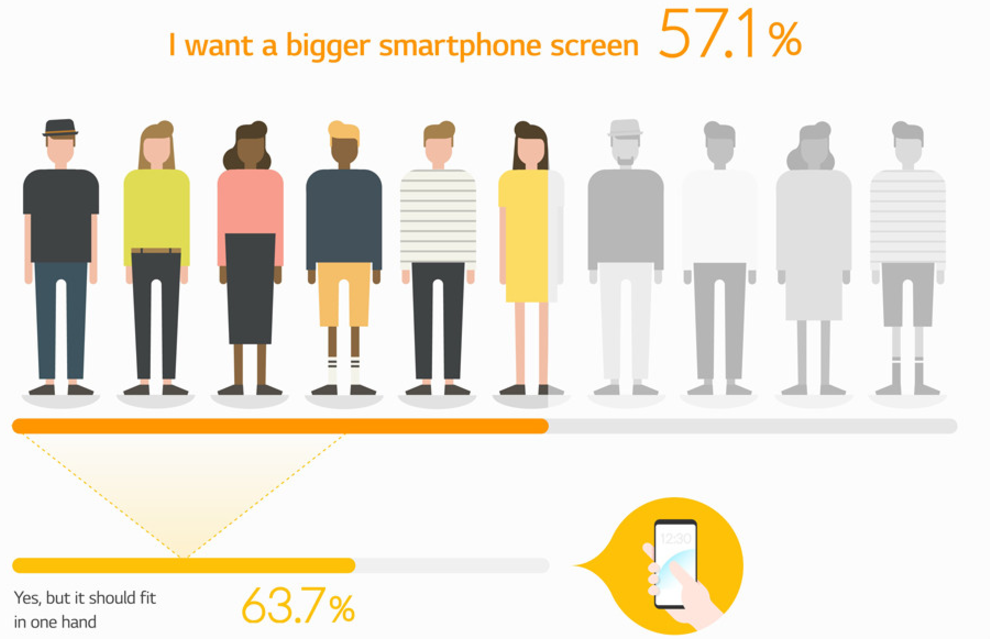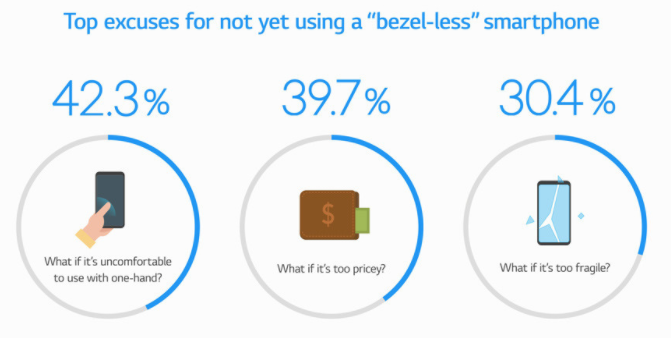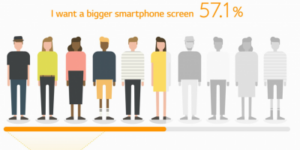LG Display just published an infograph report this week on the topic “Why Bezel-Less Matters”. In it, the company cites an IDC study on cell phone display size preference based on user multi media content consumption and sharing trends using handheld devices. This will drive adoption of 5.5″ displays and larger past more traditional smartphone sizes as early as next year.

For reference, the current generation iPhone 7 uses a 4.7″ display (326 ppi) in a 5.4- (h) x 2.6-in (w) package, while the super-sized 7 Plus from Apple has a 5.5″ diagonal display (full HD at 401 ppi).)
In its six year forecast of worldwide smartphone shipments by screen size (2015 to 2021), IDC shows that shipments of smartphones with screens ranging from 5.5″ diagonal to 6″ will surpass the smaller 5″ to 5.5″ models by mid 2018, and top out at the end of the forecast year with 750 M units shipped, with the smaller size at 730M. (And with a 2.6% difference, that’s pretty near flat for a forecast four years out.)
 IDC Study on Smartphone display size shipments 2015 – 2021 Source: LG Click for higher resolution
IDC Study on Smartphone display size shipments 2015 – 2021 Source: LG Click for higher resolution
To LG bezel-less seems a natural progression in fitting more display area in the same size package, but the plain truth is that. with perhaps the incremental addition of a wrap around edge display, screen size is still tied at the hip with device size. This will remain the gating factor in display size, perhaps or until the long-promised fully foldable and it’s cousin, the rollable display finally materialize in the consumer mainstream.
Meanwhile, LG did it’s homework on the consumer side and published an interesting infograph: why bezel-less matters featuring a host of user preferences on the bezel-less option. The key conclusion of the study is that the majority of the participants (some 63.7%) said that the larger (iPhone Plus) size should fit comfortably in one hand. This is the raison d’être (reason to exist) for the LG bezel-less display, as less bezel means more display area, but without too much width for the hand.

Some readers may recall that single hand use was the very reason Steve Jobs refused to grow the size of the original iPhone, ultimately to the detriment of unit sales. Those wanting larger displays (presumably for non-phone functions like multi media consumption) changed camps over to the Google/Android side, opting for the larger Samsung smartphone displays. Eventually Apple found itself playing catch-up launching the first of its “plus” versions of it’s iPhone as a world wide market laggard behind the Korean phone maker and it’s popular Galaxy series that included the Galaxy Note with its 5.3″ diagonal sized “phablet” as early as 2011. (I have heard that in some Asian countries, it is considered desirable to have a small head. Therefore, some buy big phones so that the impression is that the head is smaller – Man. Ed.)
I did find parts of the exercise a bit futile, and wonder just how much explaining the researchers had to do to get the respondents to understand exactly what they were being asked. Imagine having to explain (being shown) the concept of no bezel, and then ask what they thought the advantages to this type of display (as opposed to a 1mm narrow bezel on most phones today.)? The response must have been, “are you kidding me?”

But kidding or not, be sure to take a look at the findings of LG’s enquiry into the consumer head space regarding future smartphone purchases that will perhaps include a new bezel-less display, and may (or may not) fit comfortably in one hand. — Stephen Sechrist
Sony Looking at Bezel-less Design for IFA

